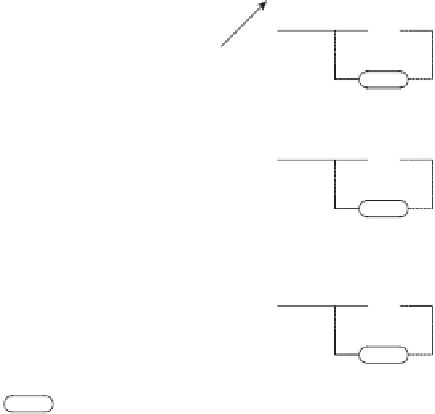Environmental Engineering Reference
In-Depth Information
(e)
static VAR compensators (SVCs);
(f )
fast AC transmission systems (FACTS);
(g)
renewable energy generator interfaces.
(a) Tap Changers and Voltage Regulators
Tap changers play a major role in voltage control. A range of connection points (taps) to the
windings of a transformer allows the turns ratio to be altered and thus provides voltage
control. An on-load tap changer is a motorized switch allowing adjustment while the trans-
former is in service.
Tap changers do not themselves enable the generation or consumption of
Q
. Their function
is to regulate the reactive power fl ow over the network from generators to consumers. An
example of how this is done is described in the next subsection.
Figure 5.11 shows that on-load tap changers (transformer symbol with an arrow) are widely
used throughout power systems, except on the 11 kV to 400 V fi nal distribution transformers.
The transformer symbol that does not consist of two linked circles represents an 'autotrans-
former'. This is a more economical transformer that consists of only one winding acting both
as primary and secondary, often used to link some of the high voltage levels. There are a
great many distribution transformers and the maintenance of motorized tap changers would
be impractical. Instead, the taps on a distribution transformer can be adjusted manually, but
this requires taking the transformer out of service.
400 k
V
~
G
AVR
275 kV
G
~
AVR
132 & 66 kV
~
G
AVR
AVC
33 & 11 kV
Mamual TC
400V
Figure 5.11
Voltage levels and interconnections to regulate
Q
fl ow in a typical transmission
network


















